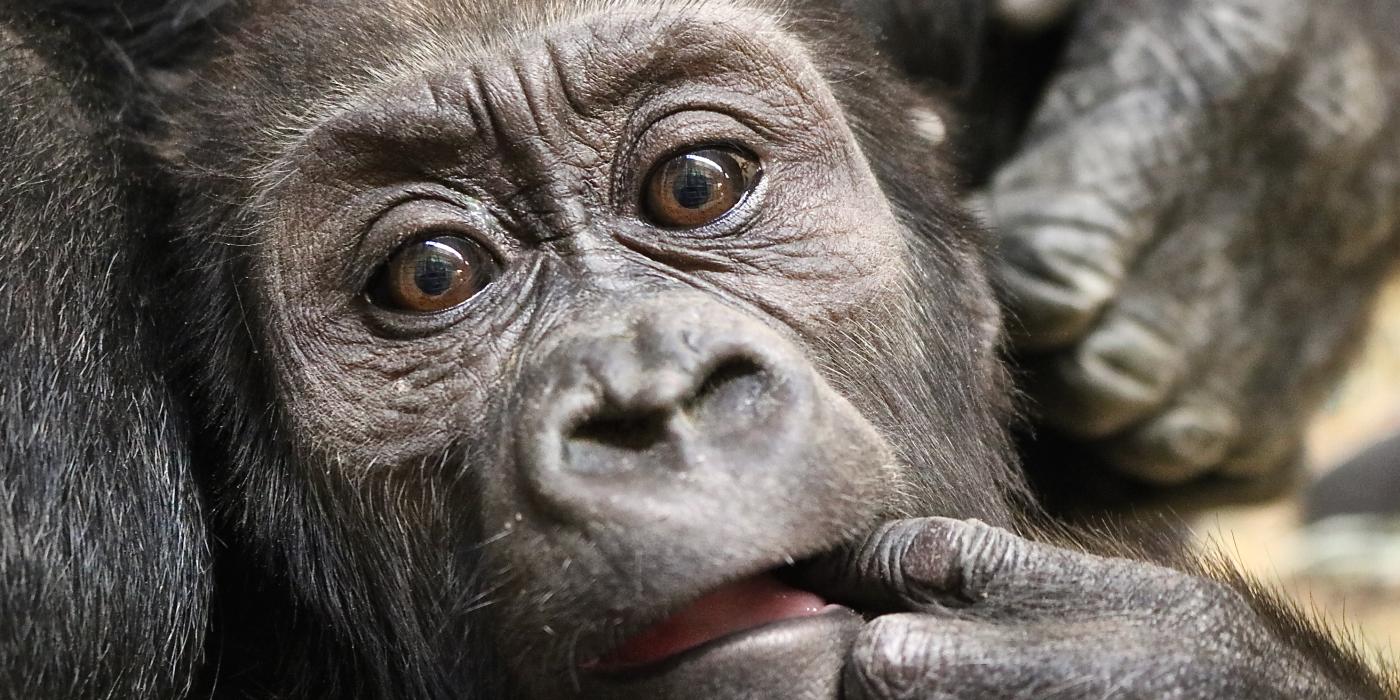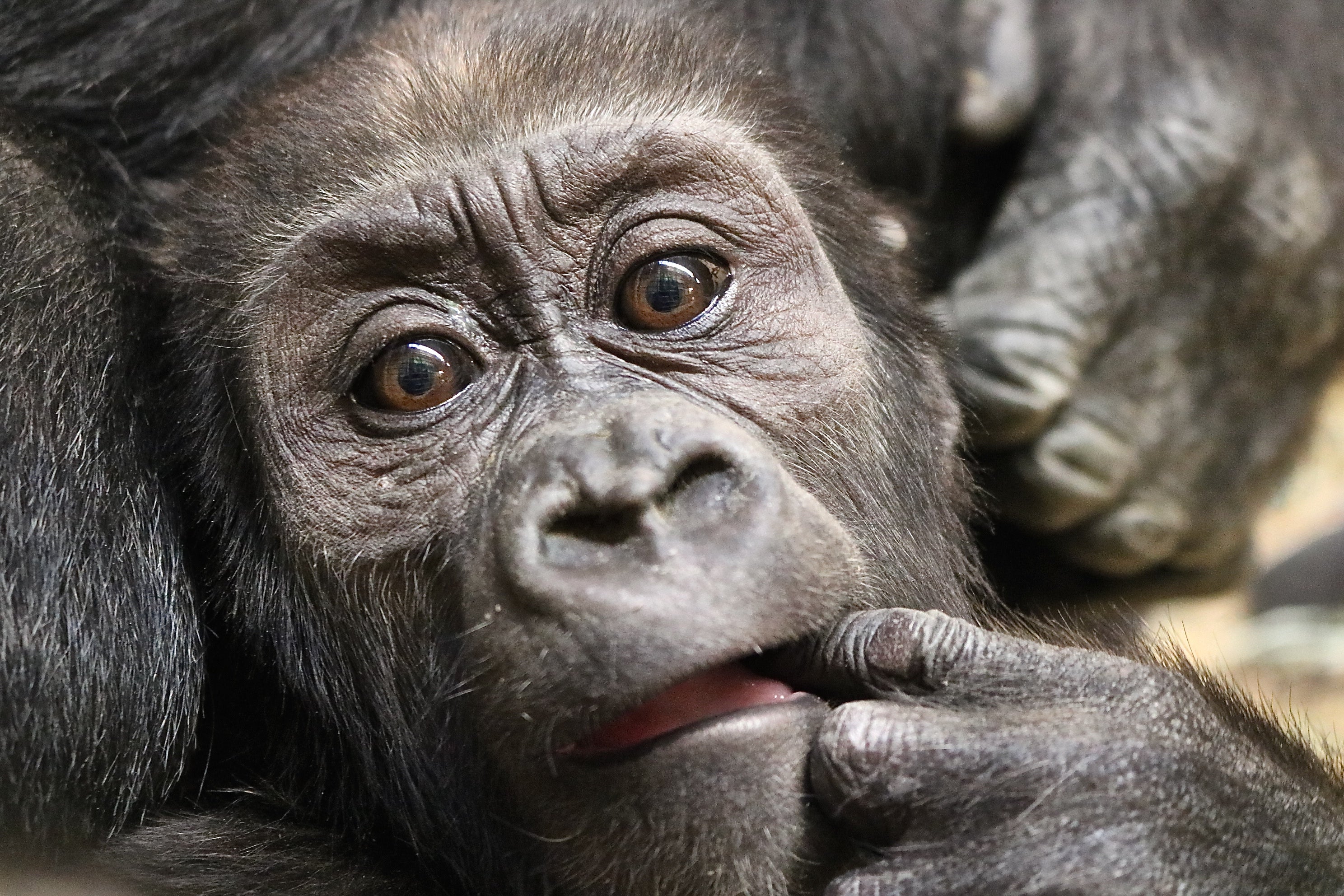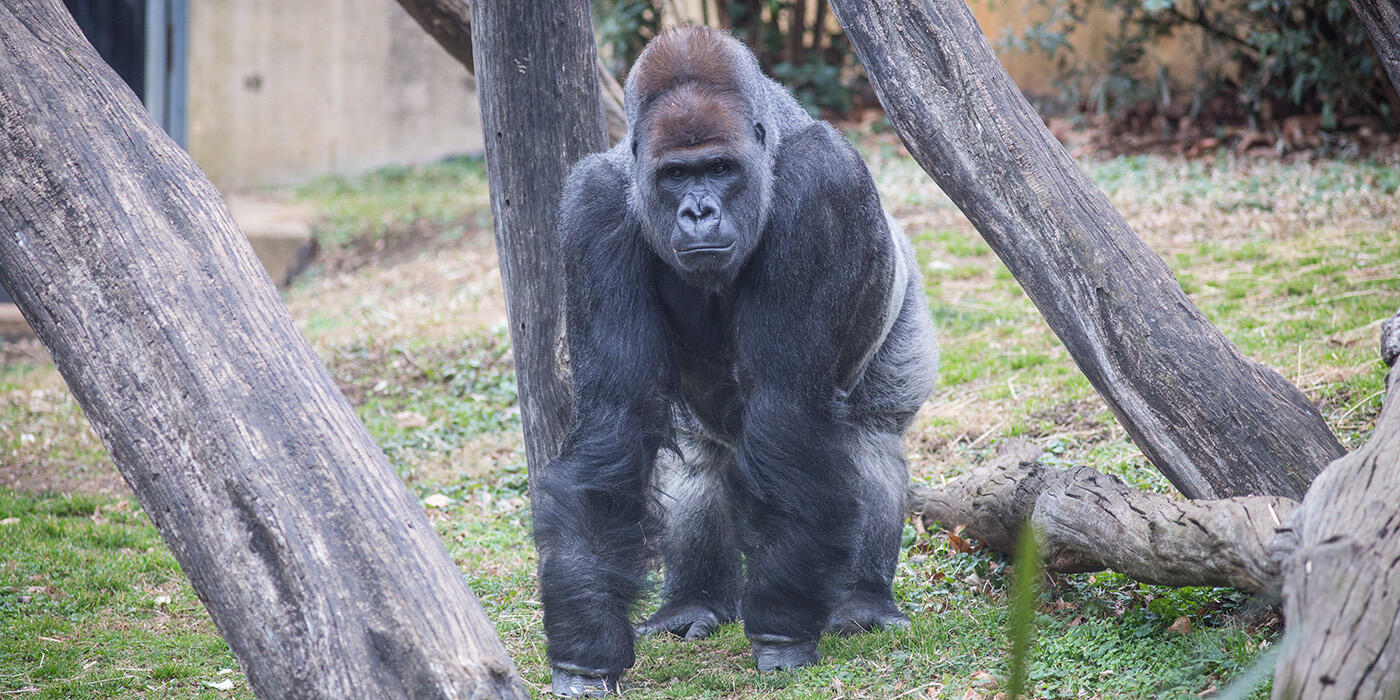#GorillaStory: Moke’s Getting Stronger

This update was written by Meredith Bastian, curator of primates, and Becky Malinsky, assistant curator of primates.
Our 10-month-old western lowland gorilla infant, Moke, is well on his way to recovery following a fracture to his left femur last month. With each passing day, Moke places more weight on his injured leg. His gait and movement have improved over the past four weeks. In fact, the way he maneuvers around his habitat at the Great Ape House, you would have no inclination he has a broken bone!
Moke’s overall demeanor is good, and he is just as playful as always. He and his parents, Baraka and Calaya, receive multiple types of enrichment every day, and he shows a lot of interest in every new object he encounters. One of his favorite activities is climbing, and he practices this skill often, swinging back and forth on the mesh and hanging upside-down from his feet. Keepers baby-proofed his favorite climbing spots by adding a thick layer of hay bedding, providing Moke with a soft spot to land just in case he takes a tumble.

To help strengthen Moke’s bones, our veterinarians prescribed Vitamin D and calcium supplements, to be taken over the next 12 weeks. Keepers administer them every morning—they’re chewable (and tasty!), so he takes them readily. As Moke gets older and bigger, his body will lay down more calcium as his bones grow. Moke receives the majority of his Vitamin D through Calaya’s milk, his diet and, of course, from the sun. These supplements will give him a “boost” and aid in normal bone growth, maturation and development.
We are evaluating Moke’s progress day by day, and our goal is to reunite the troop soon. That said, we are taking every precaution to give Moke’s leg the opportunity to fully heal. We are closely monitoring the social dynamics of all of the troop members, too. So far, all of the adults are calm and continue to do well. Giving Moke and his parents an outlet to interact with Mandara and Kibibi—through a mesh “howdy” door—is key to maintaining that calm. Once we are confident that Moke’s leg is healed, we will reunite the troop.
For the time being, Moke looks toward his parents and keepers for most of his playful interactions. Calaya, especially, spends time playing with her son, though their play sessions are much less vigorous than those between Moke and Kibibi. Baraka will play with Moke from time to time, too, but he spends most of his time near the door that connects their enclosure to that of Mandara and Kibibi. When Calaya and Moke are near the door, Kibibi jumps at the opportunity to interact with her best buddy through the mesh.
If you are planning a trip to the Zoo, we encourage you to stop by the Great Ape House and pay a visit to our gorillas! We welcome you to learn more about them—as well as our orangutans—and their counterparts in the wild.
Wild about Moke? Follow his adventures at the Smithsonian’s National Zoo using the hashtag #GorillaStory. During your next visit, chat with a member of the Zoo’s animal care team at the daily 1 p.m. gorilla keeper talk.Related Species:



